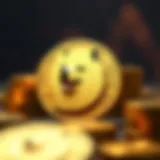Mastering the Art of NFT Success


Intro
In the intricate dance of the digital age, NFT art has emerged as a captivating player. The marriage of art and blockchain technology has birthed a vibrant marketplace, enticing traders, investors, and tech enthusiasts to dip their toes or dive headfirst into a new paradigm. But what separates the wheat from the chaff in this rapidly shifting landscape? Understanding the traits of successful NFT art is more crucial than ever.
The NFT ecosystem is deeply intertwined with the broader cryptocurrency market. For artists and aspiring collectors, grasping the dynamics of both realms is essential. It’s not just about having a unique piece of digital art; one must navigate a myriad of factors—market trends, community engagement, and ethical considerations—that can make or break a sale.
In this exploration, we will unpack what makes NFT art thrive amid an ever-evolving backdrop. We'll dive into the cryptocurrency trends that influence artistic value, outline investment strategies tailored for the digital art enthusiast, and track the pulse of emerging technologies that keep pushing this field forward. Moreover, we will highlight the importance of community around NFT art, as often it’s the backing of a strong base that drives success.
From understanding long-term versus short-term investments to embracing risk management techniques, we’ll equip you with the tools necessary for success. This journey is about more than just financial gain; it’s about fostering a sustainable art medium that respects its roots while exploring new horizons.
So, let’s roll up our sleeves and delve into this vibrant marketplace where creativity meets capital in innovative ways.
Prelude to NFT Art
The art world is undergoing a transformation, thanks in large part to digital technology and the rise of non-fungible tokens (NFTs). Understanding the fundamentals of NFT art is crucial for artists, collectors, and investors navigating this new digital landscape. This introduction provides a framework for understanding the emergence of NFTs in the art sector and highlights why grasping this concept is essential for anyone keen on achieving success in this space.
NFTs are revolutionizing the way art is created, bought, and sold. Unlike traditional art forms, NFTs offer digital artists a platform that ensures their work is recognized and can be monetized. These tokens serve as proof of ownership and authenticity, a major boon in a digital world where duplication is as easy as a right-click.
Defining NFTs and Their Role in Art
Non-fungible tokens, or NFTs, are unique digital assets stored on a blockchain, often Ethereum, that represent ownership of specific items—artwork included. They differ from cryptocurrencies like Bitcoin because each NFT has distinct characteristics and values. In the context of art, NFTs provide a new way to assert ownership and provenance, which has historically been a challenge in the digital realm.
This development has breathed new life into the art industry. Artists can create limited editions of their works, giving each piece a unique identity despite existing digitally. Furthermore, smart contracts enable artists to receive royalties each time their work is resold, ensuring they benefit from the ongoing market value of their creations. This is a game-changer for many creators who previously had little control over what happened to their art after it sold.
Some key elements to understand about NFTs in art include:
- Ownership: Each NFT contains unique info that proves authenticity and ownership.
- Market Appeal: Collectors are drawn to the exclusivity and rarity that NFTs can offer.
- Integration with Traditional Art: Many traditional artists are now exploring how to incorporate NFTs into their craft, blending physical and digital realms.
"With the rise of NFTs, artists are taking back control over their art, ensuring they can thrive in a rapidly changing economy."
The Evolution of Digital Art
Digital art has not always been taken as seriously as its traditional counterparts. Initially dismissed by some critics, digital artwork was often seen as less valuable or legitimate. However, in recent years, there has been a significant shift. The development of increasingly sophisticated tools and platforms has expanded the possibilities for artists, allowing for new styles, techniques, and even interactive experiences.
The emergence of social media platforms allowed artists to showcase their work to a global audience. Sites like Instagram and DeviantArt have connected creators with fans in ways that were previously unimaginable. As more people engaged with digital art, its perceived value began to change as well. The success of NFT marketplaces has been a crucial driving force in this evolution, marking a tipping point for widespread acceptance.
Various distinct phases in the evolution of digital art include:
- Early Stages: Simple graphic design and pixel art focused on developing digital tools.
- Rise of Interactive and Generative Art: Artists began using algorithms and computer code to produce dynamic pieces.
- NFT Boom: The introduction of blockchain technology validated digital work, allowing artists to monetize to a greater extent.
Digital art is firmly entrenched in the larger art conversation today, with NFTs playing a pivotal role in elevating its status. Understanding these developments provides vital context for anyone looking to thrive in the increasingly competitive world of NFT art.
Key Characteristics of Successful NFT Art
To navigate the ever-evolving landscape of NFT art, it is crucial to understand the key characteristics that contribute to its success. These elements serve as the backbone for artists and investors alike, helping to delineate impactful pieces in a market saturated with digital creations. By focusing on originality, storytelling, visual appeal, and aesthetic value, artists can distinguish themselves and attract an audience. Each aspect plays a unique role in reinforcing not only the value of the artwork but also the engagement it fosters within the community. Let's dive into these characteristics, exploring what makes NFT art resonate in a crowded marketplace.
Originality and Creativity
The first hallmark of successful NFT art is originality. In a field that thrives on innovation, a one-of-a-kind creation can capture attention and drive demand. Originality is not merely about being different; it's about expressing a unique voice or perspective that resonates with viewers. Artists must delve deep into their experiences and inspirations to create something fresh. This could mean experimenting with new styles, merging genres, or even incorporating interactive elements into the artwork.
Moreover, creativity involves breaking away from traditional artistic boundaries. For instance, an artist might combine traditional painting techniques with digital mediums or explore themes that are underrepresented in the art world. It’s essential for creators to push the envelope, creating pieces that stand out as authentic representations of their thoughts and visions. Simply put, the art must grab ahold of the viewer's imagination and transport them somewhere new.
Storytelling and Conceptual Depth
Art that tells a story often leaves a lasting impression on its audience, and in the realm of NFT art, this characteristic is paramount. Beyond mere visuals, storytelling invites viewers to engage with the artwork on a deeper level. Each piece can evoke emotions, provoke thought, or inspire action by weaving narratives that reflect personal experiences or broader societal themes. For example, an NFT that explores environmental issues might not just present an image of a destroyed forest but can intertwine personal accounts of loss with digital illustrations, creating a more profound connection.
Conceptual depth goes hand in hand with storytelling. Successful NFT art should invite viewers to reflect on the ideas being presented, encouraging them to intellectually engage with the piece. This could be through symbolism, allegory, or thought-provoking questions embedded within the artwork itself. When artists infuse their work with a solid narrative and thematic richness, they cultivate a community of collectors who appreciate the multidimensional aspects of the art.
Visual Appeal and Aesthetic Value
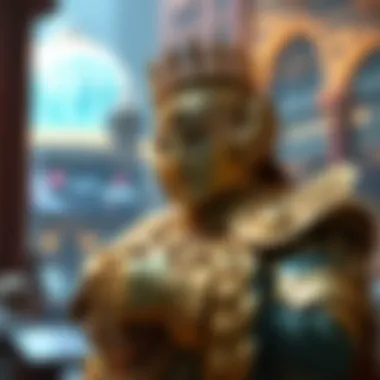
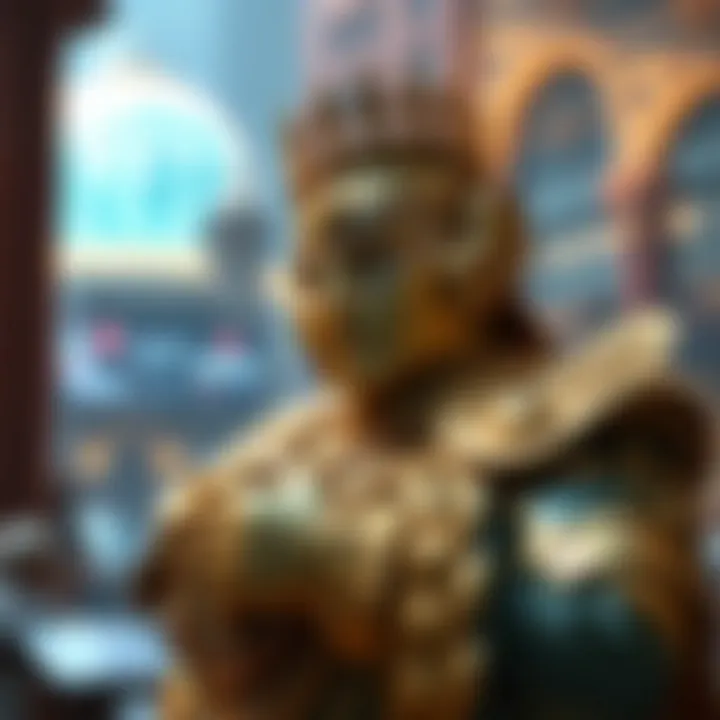
Visual appeal is a significant draw for collectors of NFT art. The aesthetic quality of a piece can determine initial interest, but deeper appreciation might follow. Successful NFT artists know how to play with color, texture, and form, creating works that not only catch the eye but also evoke an emotional response. Understanding the principles of design is crucial; balance, contrast, and composition can elevate a piece from the ordinary to the extraordinary.
Artists should also consider current trends while maintaining their personal style. This means staying in tune with popular visual languages while infusing their unique flair. Furthermore, the format of the NFT plays a role in its aesthetic value. For example, animations or 3D models can bring an additional layer of depth and engagement that static images might not achieve.
"Art is not a thing. It is a way." – Elbert Hubbard, highlighting that the creative process itself is as important as the final product.
In summation, successful NFT art exhibits originality, rich storytelling, and visual appeal. Together, these characteristics help artists forge a connection with their audience, laying the groundwork for a sustainable presence in the NFT space. As the market continues to expand, focusing on these key characteristics may determine who rises to prominence in the world of digital art.
Market Dynamics Influencing NFT Success
Understanding the interplay between various market dynamics is crucial for artists and investors aiming to navigate the vibrant world of NFT art. The NFT space is influenced by numerous elements that shape the buying behavior, trends, and ultimately the success of individual pieces of art. This section explores market demand, the role of platforms, and effective pricing strategies, providing insights into how these factors can be leveraged for success.
Understanding Market Demand
Market demand serves as the heartbeat of the NFT art market. At its essence, demand refers to the willingness and ability of buyers to purchase artwork. One influencing factor is the uniqueness of an artist's style or the rarity of an artwork. For instance, certain artists may find their works not flying off the shelf simply because they lack the distinct flair that collectors seek. It’s also about the narrative attached to the artwork—pieces with stories resonate more with potential buyers.
Additionally, trends influenced by external factors like pop culture, current events, or technological advancements can quickly shift demand. An example is when a new platform arises that gathers attention. A sudden influx of users can amplify interest in NFT art, creating a surge in potential buyers. Therefore, artists and investors must keep their fingers on the pulse of these trends to align their offerings accordingly.
The Role of Platforms and Marketplaces
The platforms where NFTs are showcased and sold play a pivotal role in the success of NFT art. Consider well-known platforms like OpenSea, Rarible, or Foundation—each has distinct nuances regarding user experience, audience demographic, and the types of art they prioritize.
For example, OpenSea offers a more generalized market, making it suitable for various types of NFT art. In contrast, Foundation tends to curate submissions more rigorously, thereby attracting collectors looking for high-quality, artistic pieces. Being on the right platform can make a substantial difference. Artists need to research and select a marketplace that aligns with their target audience to maximize their visibility.
Considerations like transaction fees and audience engagement on these platforms also matter. A high engagement rate typically leads to more transactions, and platforms that effectively promote artists can bolster their visibility tremendously.
"An artist’s exposure is often dictated by the platform they choose."
Pricing Strategies in the NFT Landscape
Navigating pricing in the NFT landscape can be a minefield for newcomers and seasoned artists alike. Unlike traditional art markets, the NFT space is still forming its pricing norms. Artists often face questions: Should they price high to create exclusivity, or adopt a lower price to sell more merchandise?
One effective strategy is tiered pricing based on the perceived value of the artwork. For instance, emerging artists might consider starting with lower prices to build a collector base, gradually increasing their prices as their reputation grows. Visual cues, such as limited editions or unique traits of a piece, can also justify higher pricing.
Moreover, regular monitoring of similar NFTs’ sales can provide insight into market trends, helping refine pricing strategies over time. A fair price should reflect both the artwork's value and market conditions.
Building a Community Around NFT Art
Communities play a pivotal role in the success of NFT art. The phenomenon goes beyond individual pieces of art; it's about fostering connections, creating discussions, and encouraging a shared appreciation for digital creativity. Building a community can be the bedrock upon which a thriving NFT career is constructed. A robust community around NFT art not only enhances visibility but also creates a support network that artists can leverage.
Engagement and Interaction with Audiences
For artists venturing into the NFT space, engagement is key. It's not enough to create and list your work; engaging with your audience can make all the difference.
- Feedback Loop: Regular interaction provides artists with valuable insights. Engaging your audience can mean soliciting feedback or simply sharing progress updates. This kind of involvement fosters loyalty.
- Community Initiatives: Hosting Q&A sessions or online art critiques can keep your audience invested. These initiatives establish a sense of belonging. Fans often take pride in watching the journey unfold, feeling they are a part of something bigger than just a transaction.
- Safe Spaces: Establish forums or social media groups where enthusiasts can gather, share ideas, and provide mutual support. Spaces that promote genuine conversation can become breeding grounds for inspiration and collaboration.
"Building notions of community in the NFT space can elevate the success of your art exponentially."
Leveraging Social Media for Promotion
In today's digital age, social media can be a goldmine for NFT artists. Platforms like Twitter, Instagram, and Discord are more than just promotional tools; they are stages where artists and collectors can interact.
- Regular Updates: Consistency is crucial. Regularly posting your work on platforms where people can easily engage allows for wider exposure. Use eye-catching visuals, and tell the story behind each piece.
- Hashtags and Trends: Utilize popular hashtags such as #NFTArt and #CryptoArtist. Staying attuned to trending topics will help your posts gain traction. Additionally, joining discussions related to NFT art and crypto can position you as a thought leader in the space.
- Influencer Partnerships: Collaborating with influencers within the NFT community can expose your work to their followers. Look for partnerships that resonate with your style and values to ensure authenticity.
Collaborations and Networking in the Community
The NFT landscape thrives on collaboration. Artists and creators don't operate in isolation; rather, collaboration can open doors to new audiences and opportunities.
- Joint Projects: Teaming up with other artists to create joint pieces can be beneficial. This not only blends different styles, creating something unique, but it also shares audiences.
- Community Events: Participate in virtual exhibitions and community events that celebrate NFT art. This encourages networking with other creators and collectors, often leading to fruitful collaborations.
- Skill Sharing: Organizing workshops or talks can enhance the community's overall skills, making everyone stronger in the market. Sharing knowledge ranges from promoting sales strategies to discussing creative processes.

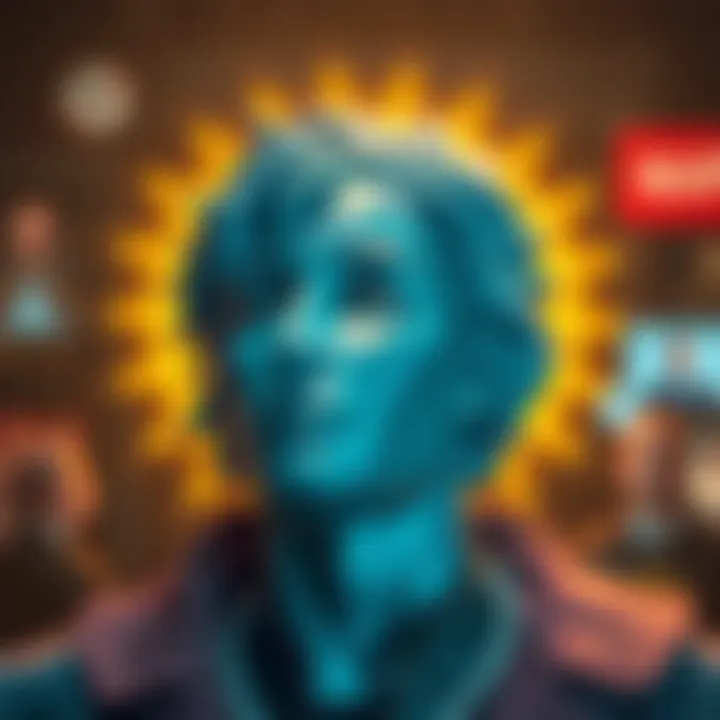
By focusing on these elements, artists can effectively build a strong community that supports their work and fuels their success in the NFT ecosystem. In a space that’s as fast-paced as this one, leveraging relationships can provide a significant competitive edge.
Practical Strategies for NFT Art Success
Success in the NFT art sphere hinges on a structured approach to navigating this complex market. There are distinct strategies artists can implement to enhance their visibility and ensure they connect with the right audience. Understanding these strategies not only facilitates the creation of engaging art but also encourages sustainable growth and appreciation of one’s work.
Identifying Your Target Audience
Identifying a target audience is crucial for any artist looking to thrive in the NFT market. Just like a fisherman wouldn't cast his net without knowing where the fish are, artists need to pinpoint who they want to reach. This could involve analyzing demographics such as age, interests, and spending behavior.
- Demographic Analysis: Look at whom your art resonates with—are they predominantly tech-savvy millennials or art collectors with a passion for digital mediums? This insight helps shape your marketing strategies and content creation.
- Engagement Activities: Don't underestimate the power of outreach. Participate in community discussions on platforms like Reddit and Discord; hosting AMAs (Ask Me Anything) can yield valuable insights into your potential buyers' preferences.
"Understanding your audience can be the difference between a hit and a miss in the NFT space."
Creating a Unique Value Proposition
In a saturated market filled with myriad artists navigating the waters, having a unique value proposition (UVP) is essential. Your UVP explains why someone should choose your art over another's. It may be inspired by personal experiences, the themes you explore, or even the technology behind your craft.
- Artistic Identity: Clearly communicate your story. What motivates you to create? Why do you think your piece matters?
- Connect Emotionally: This aspect can elevate your art beyond mere visuals. People often gravitate toward artwork that resonates with their own experiences or aspirations.
Crafting a compelling UVP means knowing how to express what makes you genuinely different; it’s about tying your creative vision with your audience's expectations.
Curating Your Portfolio Effectively
Your portfolio is the face of your NFT art. A well-curated portfolio serves to not just display your work but also tell a story about your artistic journey and intent. This requires a strategic arrangement rather than just displaying your latest creations.
- Showcase Diversity: Include varying styles and subjects that highlight your range as an artist. This diversity can draw in different segments of the audience.
- Highlight Signature Pieces: Choose 3-5 standout pieces that encapsulate your style. Ensure these are the pieces that tell your story succinctly and attractively.
- Consider Presentation: How you display your works can impact perception. High-quality images, presentations, or even interactive exhibits can set you apart.
By regularly updating your portfolio to include fresh works and maintaining a coherent theme, you’ll not only engage returning viewers but also entice new ones to join your artistic exploration.
The Impact of Technology on NFT Art
The intersection of technology and art is unprecedented in its breadth and depth, particularly in the realm of non-fungible tokens (NFTs). Technology isn't just a tool here; it shapes the very fabric of the art ecosystem. As NFT art continues to evolve, it becomes increasingly important to understand the role technology plays in enabling artists to reach wider audiences, protect their works, and establish new business models.
Blockchain Technology and Its Benefits
Blockchain technology stands at the core of all things NFT. It's not merely a buzzword—it's the blueprint that facilitates trust and ownership in a digital landscape. Consider this: when an NFT is created, or minted, it is recorded on a decentralized ledger on the blockchain. This transparency affords artists an opportunity they've never had before. They can prove ownership and authenticity without needing a gallery or a middleman.
Here are several key benefits of blockchain technology in the realm of NFT art:
- Ownership Verification: Each NFT has a unique identifier, safeguarded by the blockchain. This ensures that only the creator (or the person they've sold it to) can claim ownership.
- Immutable History: The transaction history of each NFT lives on the blockchain, providing a transparent record that can disclose previous owners and transactions. This information is invaluable for both buyers and sellers.
- Global Reach: With the internet's global nature, artists can now reach audiences beyond geographical constraints. An artist from a small town can sell their work to a buyer in Tokyo without any barriers.
- Royalties and Revenue Streams: Many blockchains allow for smart contracts that automatically enforce royalty payments. This means artists can earn a percentage each time their art is resold, ensuring their financial wellbeing even after the initial sale.
With these advantages, artists are not only able to secure their creations but actively engage in the economy surrounding them.
Smart Contracts in Art Sales
Smart contracts function as self-executing agreements coded into the blockchain. They are a game changer in the art world, shifting power and allowing for more autonomy for artists. Think of it as a digital notary—once conditions are met, the contract executes automatically, making transactions seamless and transparent.
Key aspects of smart contracts in NFT art include:
- Automation of Transactions: The automatic execution of contracts simplifies the purchasing process, allowing artists and collectors to engage in transactions without extensive negotiation or intermediary involvement.
- Set Conditions: Artists can specify the terms of a sale, such as resale royalties, and these terms are enforced by the smart contract, alleviating worries about unequal pay and unauthorized use.
- Secure Transactions: Because these contracts are on the blockchain, they carry an inherent security that protects against fraud. Buyers can have confidence that they are getting what they paid for without the risk of counterfeiting.
"The fusion of technology and art is not just a trend; it is a structural evolution that separates transient gains from sustainable creative enterprise."
Further Reading
For those who want to delve deeper into the technology behind NFTs:
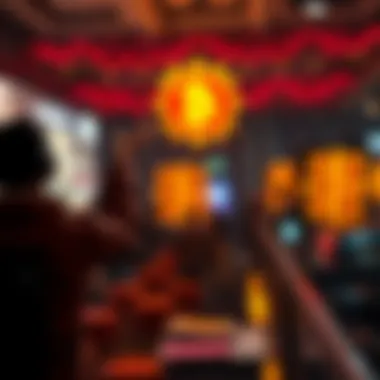
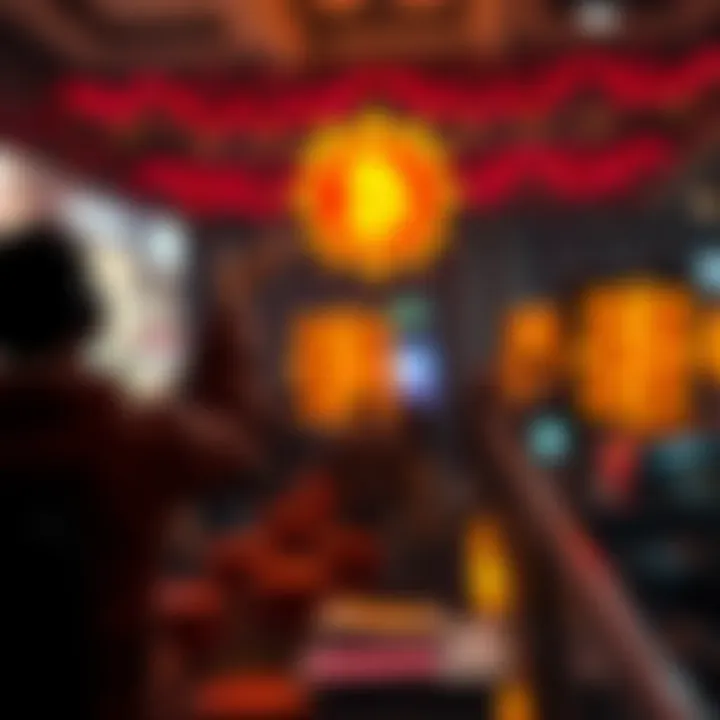
Understanding these technological foundations is crucial for anyone hoping to make their mark in the NFT art realm. Relying on tradition won't cut it; adaptability and innovation are the name of the game.
Ethical Considerations in NFT Art
The landscape of NFT art is not just a playground for creative minds and cryptocurrency enthusiasts; it’s also a complex realm that raises important ethical questions. For artists, collectors, and investors alike, understanding these ethical considerations is fundamental to navigating the NFT space responsibly. By delving into the intricacies surrounding copyright and ownership issues, as well as environmental concerns, one can gain a more rounded perspective on the implications of participating in this innovative yet unregulated market.
Copyright and Ownership Issues
In the world of NFTs, copyright and ownership issues are at the forefront of many discussions. When an artist creates a piece of digital art and subsequently mints it as an NFT, the lines between ownership of the artwork and ownership rights can become blurred. Traditionally, purchasing a physical piece of art grants the buyer ownership of that specific item, allowing them to display, sell, or trade it as they wish. However, with NFTs, the token primarily represents proof of ownership or authorship but doesn't automatically confer copyright to the buyer.
For both artists and buyers, clarity is crucial. A common misconception is that owning an NFT means you own the underlying artwork. In reality, unless explicitly stated, buyers may not have reproduction rights, public display rights, or any other rights associated with the artwork. Artists must clearly articulate the scope of rights that come with the NFT. Those aiming to buy should familiarize themselves with the license attached to the NFT they are interested in, to steer clear of any potential legal complications.
"In this rapidly evolving digital landscape, knowledge about copyright law is not just helpful, it's essential."
Here are some steps for artists and collectors regarding copyright clarity:
- Artists: Always include a clear description of what rights are granted to buyers when selling NFTs, potentially through an accompanying license.
- Collectors: Carefully read the terms of service related to NFTs. Look for explicit details on what your purchase allows, including usage rights.
Environmental Concerns Related to NFTs
Another thorny ethical issue surrounding NFTs relates to environmental sustainability. The energetic demands of blockchain technology have raised eyebrows, especially related to proof-of-work systems used in platforms like Ethereum. The environmental footprint of minting and trading NFTs can be significant, leading to heightened scrutiny around their impact on climate change and sustainability.
Critics argue that the energy consumption associated with blockchain transactions significantly affects the environment, contributing to carbon emissions. In fact, it has been estimated that a single NFT can emit as much carbon as an average car driven for weeks. As such, these concerns are spurring many artists and platforms to consider more sustainable approaches.
Innovative solutions are emerging, including:
- Transition to eco-friendly platforms: Many creators are shifting to proof-of-stake platforms, offering more energy-efficient alternatives.
- Carbon offsets: Some artists are opting to invest in carbon offsets that can counterbalance the environmental impact of their NFT activities.
- Awareness and education: Educating users about the impact of their NFT purchases can promote more sustainable choices.
For artists and investors alike, addressing environmental concerns isn’t just a trend; it’s a responsible approach to ensure that the growth of the NFT art market aligns with sustainable practices.
In summary, ethical considerations in NFT art are multifaceted, involving deep dives into copyright rights and environmental impacts. Artists, buyers, and platforms must work together to ensure that the beautiful evolution of digital art doesn’t come at the cost of legal clarity and ecological integrity. Understanding and addressing these ethical issues will pave the way for a more responsible and inclusive NFT art market.
Future Trends in NFT Art
As the digital landscape continues to shift and evolve, the realm of NFT art stands at the forefront of a profound transformation. Understanding future trends in NFT art is crucial for artists and investors alike, as these trends can significantly influence opportunities and outcomes in the marketplace.
Today's art world is rapidly adapting to the digital age, and NFTs are becoming a key player in this evolution. Let’s explore some specific elements and benefits that define the future in this exciting field.
Predicted Market Developments
The market for NFT art is expected to undergo several changes in the coming years. Here are some predicted developments that might shape its landscape:
- Increased Mainstream Adoption: As more collectors and investors come to understand the potential of digital assets, we can expect a surge in demand for high-quality NFT art. This will not only benefit established artists but also open doors for newcomers.
- Integration with Traditional Art Markets: Prominent galleries and auction houses are likely to get their feet wet in the NFT space, making the transition from traditional to digital art smoother. Collaborations with tech firms could lead to hybrid exhibits showcasing both tangible and digital art.
- Enhanced Interactivity and Engagement: Future NFT projects might prioritize interactivity, allowing buyers to engage with the art in unique and immersive ways. This can include augmented reality features or dynamic elements that change based on viewer interaction.
- The Rise of Fractional Ownership: As NFTs become more expensive, fractional ownership might pave the way for broader investor participation. This approach allows multiple people to own a piece of a high-value art piece, increasing accessibility and community involvement.
Understanding these trends not only informs artists about potential opportunities but also guides investors in making savvy choices.
The Role of Emerging Artists
Emerging artists are set to play an instrumental role in the future of NFT art. They are often at the cutting edge of experimentation, pushing the boundaries of creativity within the NFT space. Here’s why their involvement is pivotal:
- Innovation and Fresh Perspectives: New artists are often eager to explore risky ideas and different styles. This willingness to experiment can lead to groundbreaking art that resonates with a diverse audience.
- Building Authentic Communities: Many emerging artists leverage platforms like Twitter and Discord to cultivate genuine connections. By fostering transparency and dialogue with their followers, they can create loyal communities that support them long-term.
- Challenging the Status Quo: These artists may question traditional narratives surrounding art, ownership, and value. Their perspectives can provoke critical discussions in the art world and inspire others to rethink established norms.
- Vast Potential for Growth: Given the rapidly changing nature of the NFT space, emerging artists can capitalize on trends quickly. The ability to adapt to market shifts allows for dynamic careers and evolving art practices.
The End
Summarizing Key Takeaways
To distill the lessons we've covered, consider the following points:
- Originality and narrative: Successful NFT art thrives on a unique perspective and storytelling that resonates with its audience. Original works capture attention, while compelling narratives deepen engagement.
- Community and participation: Engaging with your audience through social media, collaborations, and networking is essential. The NFT arena is communal; visibility and trust grow through shared experiences and teamwork.
- Market comprehension: Being attuned to market trends and dynamics helps artists adjust their strategies. Knowledge about pricing and platform options can make a significant difference.
- Ethics in creation: Navigating the waters of legal and environmental implications is important for legitimacy and sustainability in the art world.
- Adaptability and learning: The NFT landscape is ever-changing, so continuous education is vital for staying competitive.
Encouragement for Continuous Learning
As we end this dialogue, I encourage artists and investors alike to look beyond initial successes and setbacks. The field is evolving at a blistering pace, and being adaptable is a key element in thriving within NFT art.
- Stay informed about technological advancements in blockchain and smart contracts. Knowledge about these aspects can unlock new opportunities.
- Join forums and discussions on platforms like Reddit or art-specific communities to share insights and experiences, which can be as valuable as traditional education.
- Experiment and innovate by trying new techniques or themes in your artwork. The willingness to adapt can potentially lead to discovering new niche markets or artistic directions.
In essence, embracing a mindset of continuous learning will not only enhance your skills and knowledge but also fortify your reputation in the NFT space. Remember, it’s not just about creating art; it's about building a legacy that resonates with both the present and future generations.






